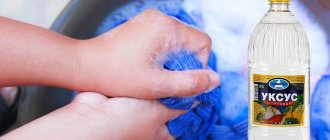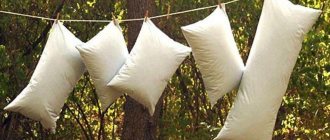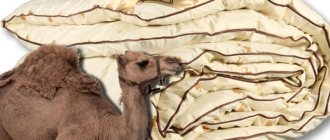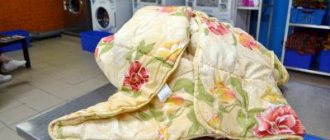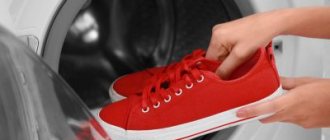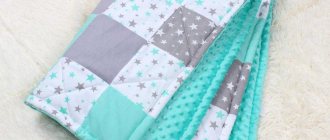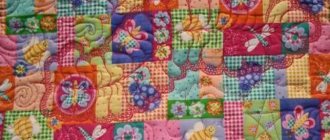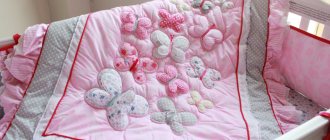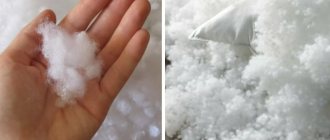Features, manufacturing, standards and GOSTs
During manufacturing, fibertek fibers are additionally treated with silicone, which gives even greater strength and resistance to caking . The canvas parameters may be different.
The thickness of the layer varies from one and a half to five centimeters,
the width of the material can be from 150 to 240 centimeters , and the density parameter ranges from 120 to 400 grams per square meter.
They increase the reliability and stability of the insulation using polypropylene, which is quilted using special equipment.
When manufacturing fibertek, an ideal ratio of synthetic fibers and air is created . For fibertek, threads have been selected that form an air cushion around themselves. It retains heat perfectly. Exceeding the recommended volume of such a layer can lead to the fact that the thermal insulation properties are significantly reduced. Deterioration in the quality of insulation is also possible due to too high fiber density.
The density of fibertek insulation must comply with the requirements of GOST 20489-75. GOST 29336-92 standards allow the use of fibertek for sewing clothing items used in a special climate zone. The safety of the material must be confirmed by quality certificates.
conclusions
- Fybertek is an innovative filler consisting of polyester synthetic fibers with a layer of air between them.
- This material is inferior in thermal resistance to many well-known synthetic insulation materials, such as synthetic fluff, holofiber, holofan and thermofiber due to the double stitching of the fibers with spabond.
- It is resistant to fire, does not absorb moisture and odors, restores its shape well in the wet and after washing, and is also resistant to tearing, which affects its service life.
- The products are lightweight and protect from frost down to -30°C.
- Clothes and workwear cannot be taken to dry cleaning.
- The material is hypoallergenic and does not contain toxic components.
Performance characteristics and properties
Matter has the following characteristics:
- The thermal conductivity index at 20 degrees above zero is 0.031 W/mK .
- Air permeability according to GOST 12088-77 is 68.6 dm3/m2s.
- The moisture capacity of fibertek is slightly higher than 39 .
Compared to synthetic winterizer, which was traditionally used as insulation, fibertek has undoubted advantages:
- long service life;
- the composition contains only environmentally friendly elements;
- safe, hypoallergenic , absolutely non-toxic;
- does not absorb environmental odors;
- retains heat better than materials with similar characteristics;
- not susceptible to moisture, which allows frequent washing of products with this type of insulation;
- removes moisture well ;
- perfectly returns to its original volume and shape after washing and drying, is not subject to deformation;
- high quality material at an affordable price.
As for other modern materials (holofiber or thinsulate), fibertek is ahead of them on the following points:
- maintains warmth in frosty conditions (up to 25 degrees below zero) ;
- low-melting threads are not used in production ;
- retains its qualities even after the material is wet;
- ideal for clothing production , as it is attached to shoulder, side seams and set-in seams;
- does not become damaged after a large number of washes;
- resistant to tears and damage;
- Resistant to combustion.
Wool
A wool blanket is a great choice for the winter season. It warms perfectly, removes moisture well from the body and dries quickly enough, and it can also be washed in a machine without any problems, which means that such a product is unlikely to become a breeding ground for pathogenic bacteria. As a rule, it weighs little. However, it all depends on the type of wool that was used to fill the blanket.
We suggest you familiarize yourself with How to boil laundry - 105 photos of how and how long to boil laundry for bleaching
The most affordable product is considered to be a product made from sheep wool. It heats well, but is quite heavy in weight. A lighter one is a blanket made of camel wool, but such a product costs much more. A real luxury is a cashmere blanket. This is the softest and lightest filler of all existing types of wool.
Application for sewing workwear
Insulation for workwear must have a specific set of qualities that are perfectly combined in fibertech.
The very first criterion that is important for this type of material is thermal insulation . It is to preserve heat that synthetic fibers are primarily used for workwear. At the same time, fibertek allows the skin to breathe without creating a greenhouse effect, which characterizes the second most important quality, namely breathability.
The shape, sewn using fibertek, fits the body, does not impede movement, it is light, comfortable, and flexible. A worker dressed in such a suit is able to perform any physical activity without any problems .
These properties make it possible to use the material for the production of uniforms for traffic police officers, who are forced to stay in the cold for a long time in the winter.
Synthetic fibers fill the uniforms of rescue workers, energy workers, and tourists.
Fibertek is also used for sewing equipment for firefighters, metallurgists, and welders. The insulation of workwear for workers who deal with fire is produced with the addition of special fire-resistant additives . These substances artificially increase the melting point of the fiber.
Another modification of fibertek is a laminated top sheet, which makes the insulation not susceptible to thermal radiation from the outside.
Material treated with silver-based antistatic agents will be the best alternative to cold and massive batting and similar insulation in the form of oil workers, gas service workers, gas station personnel and other employees working in professions where static electricity can pose a real threat to life.
Scope of application: what to sew
The convenience of using workwear made from fibertech is due to two main factors: the ability to work outdoors without interference at low temperatures and the absence of a greenhouse effect due to breathability. Read about Turkish bamboo towels here.
Uniforms with such filling are sewn for traffic police officers, rescuers of the Ministry of Emergency Situations, and they are also used to create ammunition for lovers of active winter recreation: ski suits, overalls, kits for expeditions and extreme hikes, since they do not hinder movement. Sleeping bags and bedding are also made from it. But for workwear for medical professions, satori fabric is used.
Representatives of professions that involve direct contact with electricity, wiring and instruments need protective clothing with antistatic properties. Fibertek, treated with silver-based compounds, will be an excellent replacement for classic batting and other heavy fillers, which make work uniforms uncomfortable for oil workers, gas sector workers, gas stations, etc. This material will tell you about a blanket for a bed in a sea-green bedroom.
Fibertek is used to sew soft parts of children's furniture - lining the sides of strollers, cribs and playpens.
Use in other areas
Thanks to its properties, fibertek has found application in both the household and furniture industries..
Hygiene, environmental friendliness, and safety make canvas an indispensable material in the production of furniture.
High tensile strength, resistance to damage and compression, easy care allow the use of a synthetic substitute for natural down as a flooring material and filler for upholstered furniture, pillows, and toys .
Polyester fibers are perfect for arranging a sleeping area. Moreover, they can be used both in ordinary sleeping bags and in expensive pieces of upholstered furniture.
Fibertek, holofiber and other insulation materials: similarities and differences
With the same thickness, this material is inferior in thermal insulation qualities to Thinsulate, but it is much more affordable. The thermal conductivity level of fibertek is 60% lower than that of felt. Like most other types (holofiber, Thinsulate, Isosoft, etc.), this filler can withstand low temperatures, is wear-resistant, and can be hand and machine washed.
This material “breathes” well and lasts quite a long time. Like most synthetic materials, it does not cause allergies, it does not harbor parasites, and does not develop fungus or mold.
Blankets with this filling are soft and airy, while they do a good job of removing heat and moisture from the body. You can wash holofiber blankets at any temperature, using all possible cleaning agents - this will not harm them at all.
Average prices, nuances of care
Synthetic fiber is much more practical than natural clothing fillers:
- Products made from synthetics can withstand washing in a drum-type machine very well. They are washed at a temperature of 35–40 degrees, and can be dried at 500 rpm in a machine. Hand washing is also permitted.
- It is prohibited to use products that contain chlorine . Chemical cleaning of products can lead to loss of insulation properties.
- The washed item is hung on hangers and dried naturally . It is enough to shake a clean item of clothing several times so that the fluffy balls are evenly distributed in the inner space of the clothing.
The average price of synthetic fiber varies from 70 to 110 thousand rubles per kilogram of balls.
Nowadays thermofin insulation is used in sewing a wide variety of types of clothing. Read more about this in the next publication.
What microfiber is and where it is used, we will tell you in this article.
Bamboo
This natural filler has been increasingly winning the sympathy of buyers in recent years. Blankets made from this material are quite warm, and they quickly absorb moisture and evaporate it just as quickly. However, the main trump card of this filler is its pronounced antibacterial effect.
We suggest you read: Washing a jacket with fur in a washing machine
These blankets are machine washable and retain their shape even after many washes. Bamboo is an excellent thermoregulator that cools the body in hot weather, so it is perfect for the spring and summer season. If we talk about the disadvantages of bamboo fiber, then it, like any other natural material, cakes over time.
The main synthetic fillers are synthetic padding polyester, holofiber, lyocell, fibertek.
